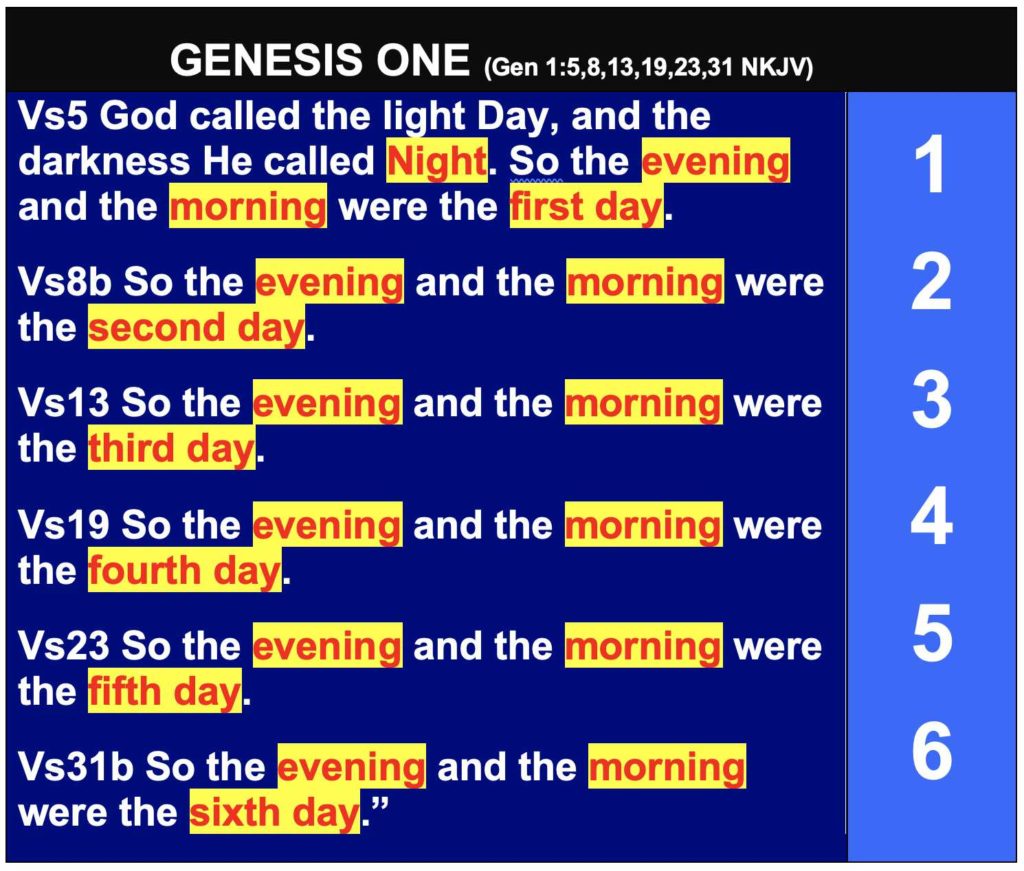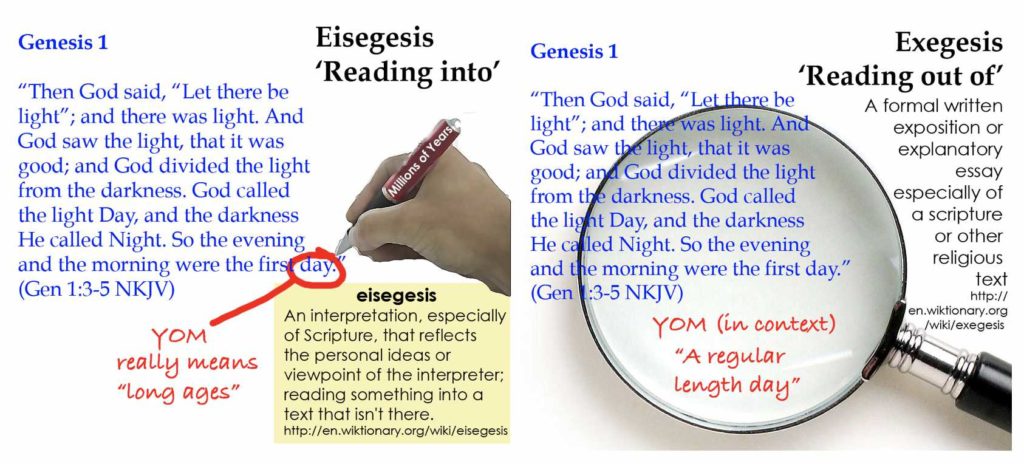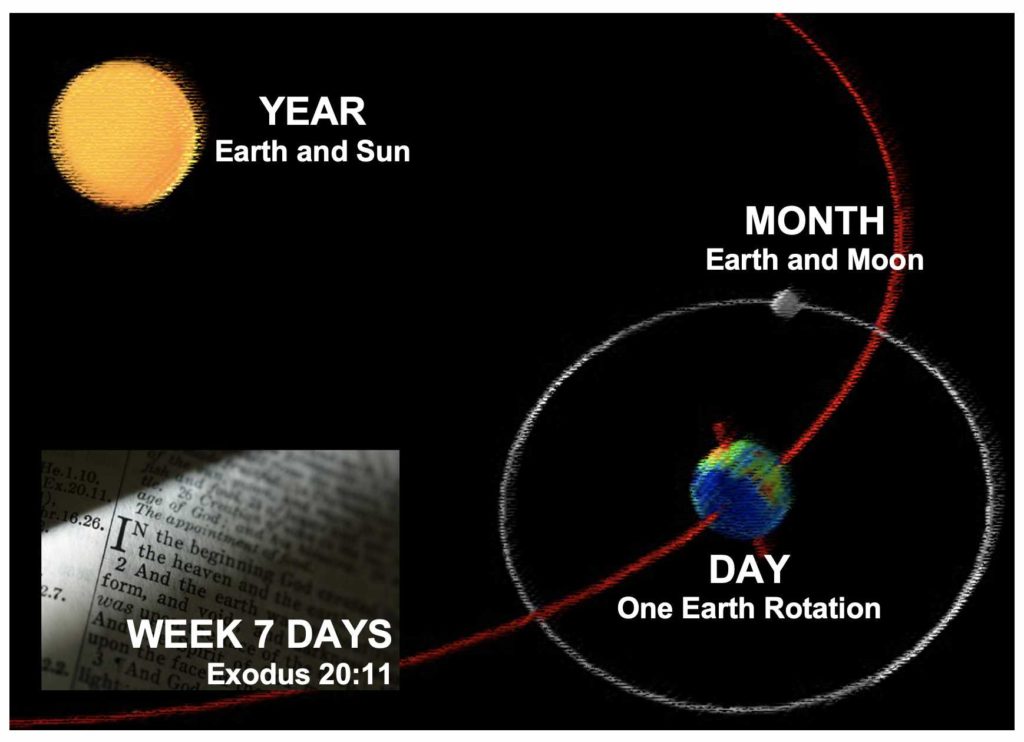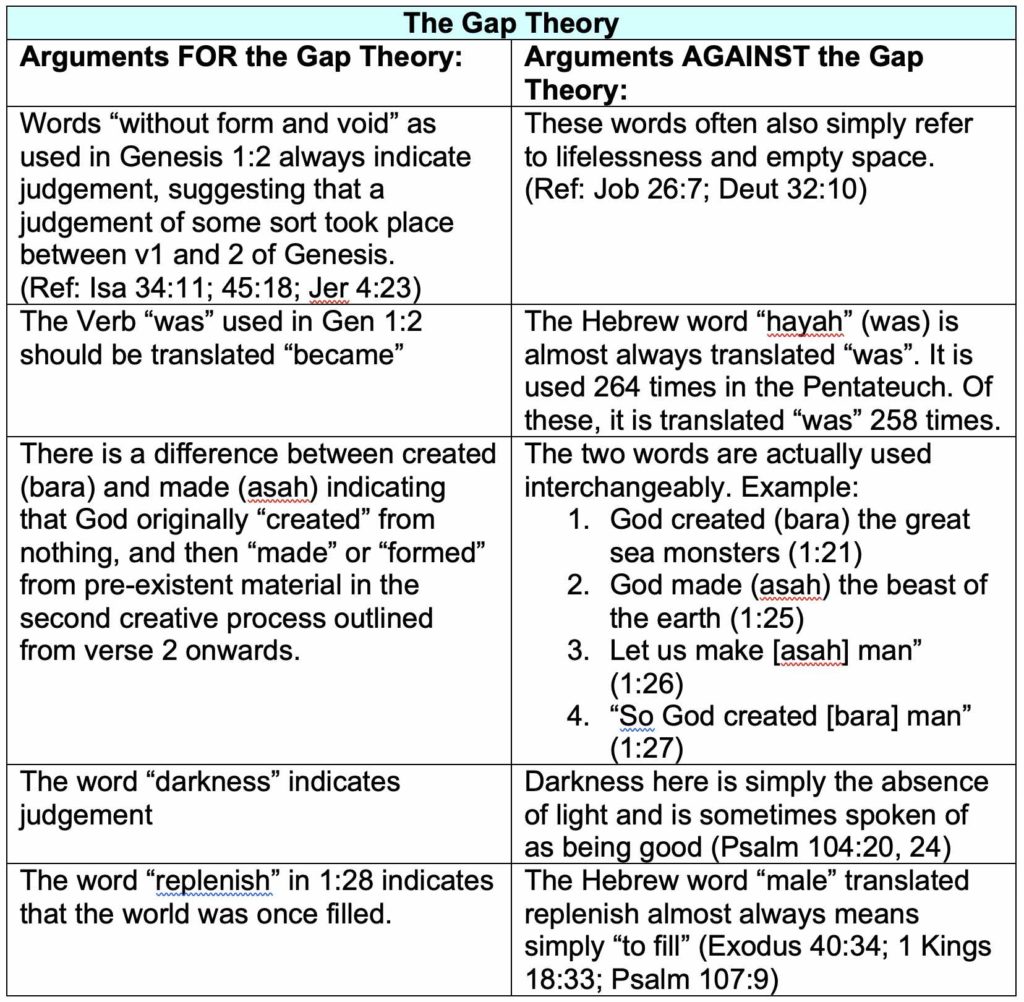Genesis 1:1- 27
The Scriptures begin their account explicitly and unapologetically:
“In the beginning God created the heavens and the earth.”
Genesis 1:1 NKJV
They proceed to outline the process by which this took place. Several features are worthy of note:
- God (the Father) created by His Word (the Son) through the operation of the Holy Spirit (Genesis 1:2-3).
- God spoke the world’s into being. “God said…and it was.” (Genesis 1:3, 6-7, 9, 11, 14-15, 20, 24)
- God did this within a very specific time frame (6 days). God first created a perfect environment (Day 1,2,3), He then populated that environment (Day 4,5,6)
- What He created was perfect (good)
- The crown of His creation was uniquely made in His own image;
“So God created man in his own image, in the image of God created he him; male and female created he them.” (Gen 1:27 KJV)
Within one verse God’s Word refutes:
LIE! Atheism: “There is no God”
TRUTH! “In the beginning God”
LIE! Polytheism: “There are many gods”
TRUTH! “In the beginning God” (singular)
LIE! Pantheism: “All is God and God is all”
TRUTH! God is separate from His creation
LIE! Materialism: “matter is the only reality”
TRUTH! God created all matter
LIE! Existentialism: “There is no God and no purpose to life”
TRUTH! There is a purpose to creation.
LIE! Evolution: The universe was created by natural processes over millions of years”
TRUTH! The universe was created by God in a short period of time by supernatural process.
LIE! Humanism: “man is his own god”
TRUTH! God created all, including man
The Creation Week
The Bible states that God created the universe in 6 days, and rested on the 7th day. Debate surrounds the nature of these days, most of which arises from either;
- An attempt to refute the Genesis account completely
- an unnecessary endeavour to reconcile the Genesis account with manmade theories regarding the age of the universe and its origins.
The two main models seeking to explain our origins are Creation and Evolution, with varying interpretations. Three main views of the origin of life are presented in the following table:

In reality Evolutionary theory is entirely irreconcilable with the Biblical account of creation. To accept Evolutionary theories as scientific fact, as taught in many schools, is to reject the authority of the Bible.
When the authority of these first verses of Scripture is rejected, the weight of all that follows is entirely undermined.
Six Literal Days
An unbiased reading and interpretation of the Genesis account of creation leaves no doubt that the “days” of creation were literal 24 hour periods of time – a regular “day”
The Hebrew word used for day in Genesis Chapter one is “Yom”. It is used 2301 times in the Old Testament.
Genesis also refines its use of the word with the qualifying statements “the evening and the morning”.

When the word “Yom” is used in this way anywhere in Scripture it always refers to an ordinary day.
Any other reading of these verses would be an example of ‘eisegesis’ (reading into) as opposed to proper ‘exegesis’ (reading out of). An interpreter would have to come to the Bible with an outside bias in order to apply any other interpretation.

The real question is not “how could the universe be created in only six days?”, but rather “why did it take God so long?”. The only rational explanation for a seven day week is this literal historical account in Genesis chapter one. Other measurements of time have explanations in natural phenomena. The seven day week has no such basis.

When we accept Genesis 1 as authoritative other theories that attempt to reconcile man’s ideas about our origins with God’s account through Moses are unnecessary. One of the problems that Christians have faced in the past, and even now struggle with because of lack of knowledge concerning the facts, is a supposition that ‘evolution’ is no longer a theory, but a proven scientific fact.
Nothing could be further from the truth. We do not seek here to give conclusive or expert evidence for these observations because we are not proficient enough to argue all the points conclusively. However, for those with a desire to dig deeper a recommended book list is attached at the conclusion of this session.
Theories seeking to reinterpret Genesis
Theistic Evolution and Progressive Creationists
Basically believe that the “millions of years” of history required to reconcile evolutionary theory with Genesis can be fitted into a model which re-interprets the “days” of creation to be long periods of time, or allegorical descriptions of geologic ages or processes.
Day Age Theory
This compromise of the Creation account postulates that the “days” of the Creation week were long periods of time, and not literal days. They believe that the “evening and morning” were the beginning and end of geologic eras.
Progressive Creationists
Concede that God created all things, but did so in a progressive manner over vast periods of time.
Theistic Evolution
States that God created the first life-forms and then used ‘evolution’ to develop those primordial forms into the vast panorama of complex life we see today. Hence, Adam was actually the result of millions of years of evolution from amoeba, not a direct creation of an almighty God.
The Gap Theory
One of the most interesting theories, and one that certainly entertains the imagination, is what is commonly termed the “gap theory”. Among other things, this theory seeks to reconcile the supposed geological ages asserted by materialists and evolutionists by placing a vast and undefined period of time between verse one of Genesis and verse two.
The theory asserts that God first created a perfect universe (Gen 1:1). Satan then fell from heaven and marred this perfect universe. Following this God re-creates or remoulds the sin-marred creation, and this re-creation is the account we find in Genesis.

Arguments FOR the Gap Theory:
- Words “without form and void” as used in Genesis 1:2 always indicate judgement, suggesting that a judgement of some sort took place between v1 and 2 of Genesis. (Ref: Isa 34:11; 45:18; Jer 4:23)
- The Verb “was” used in Gen 1:2 should be translated “became”
- There is a difference between created (bara) and made (asah) indicating that God originally “created” from nothing, and then “made” or “formed” from pre-existent material in the second creative process outlined from verse 2 onwards.
- The word “darkness” indicates judgement
- The word “replenish” in 1:28 indicates that the world was once filled.
Arguments AGAINST the Gap Theory:
- The words “without form and void” often also simply refer to lifelessness and empty space. (Ref: Job 26:7; Deut 32:10)
- The Hebrew word “hayah” (was) is almost always translated “was”. It is used 264 times in the Pentateuch. Of these, it is translated “was” 258 times.
- The two words are actually used interchangeably. Example: God created (bara) the great sea monsters (1:21), God made (asah) the beast of the earth (1:25), Let us make [asah] man” (1:26), “So God created [bara] man” (1:27)
- Darkness here is simply the absence of light and is sometimes spoken of as being good (Psalm 104:20, 24)
- The Hebrew word “male” translated replenish almost always means simply “to fill” (Exodus 40:34; 1 Kings 18:33; Psalm 107:9)
Radical gap theorists even populate this pre Genesis 1:2 world with a souless pre-Adamic race of beings, who were carried away by a massive flood which was part of the judgement of satan and the perverted earth over which he had presided as an archangel ruler (hence the earth being covered with water in Genesis 1:2). The resulting disembodied spirits of this pre-Adamic race are what we now call ‘demons’.
The Gap theory was especially popularised by George C Pember in 1876 and by C I Schofield in 1917 when he included it in his hugely popular Reference Bible.
Apart from clearly diverting from plain exegesis, all of these theories place the principle of sin and death at work in the earth prior to the fall of Adam. The Scriptures are clear however that there was no death principle at work in the earth before Adam and that death came through his disobedience.

“Wherefore, as by one man sin entered into the world, and death by sin; and so death passed upon all men…”
Romans 5:12 KJV
Any model that embraces a fossil record indicating an age-long history of death, disease and struggle prior to Adam’s fall has to wilfully ignore the testimony of Paul and others that sin, and consequently death, was the direct result of Adam’s disobedience.
Certainly, prior to this event, satan sinned and was cast out of heaven (the timing of this, which is unclear, is another reason many embrace the gap theory), but we are here considering the principle of sin and death at work in the earth. Genealogical records in the scriptures also leave no room for millions or even thousands of years to be squeezed in anywhere.

Why is this important?
Satan’s strategy from the outset has always been to ask the question, “Hath God said?” (Genesis 3:1). Here he is asking us, “hath God said that He made the earth in only six days, and less than ten thousand years ago?” The answer is a definite yes, God has said just that. Satan’s next step, if we choose to enter into debate with him is to then flatly deny the testimony of the Creator, “Ye shall not surely die!” In our case he declares, “God did not create the world!” and interjects millions of years, evolution from amoeba and all sorts of other reasons to disbelieve the Scriptures.
Interestingly, when it comes to origins, no one can scientifically prove anything. Because no one was there, and no one can repeat the process, it remains a matter of absolute faith: faith in the Bible, or faith in some other model.
Eminent scientists on both sides of the argument cannot categorically state, “this is how the universe began.” All that they can do is look at the evidence in the ‘present’ and draw conclusions from that evidence. The conclusions that anyone draws will depend largely upon the ‘lens’ that they choose to look through as they assess what they find.
Quotes from some scientists concerning origins
“More than 30 years of experimentation on the origin of life in the fields of chemical and molecular evolution have led to a better perception of the immensity of the problem of the origin of life on Earth rather than to its solution.”
Dr. Klaus Dose, “The Origin of Life: More Questions than Answers,” Interdisciplinary Science Reviews, vol. 13, no. 4 1988, p. 348.(Dose is Director, Institute for Biochemistry, Johannes Gutenberg University, West Germany)
“The origin of life is also a stubborn problem, with no solution in sight….”
Franklin M. Harold, Professor of Biochemistry and Molecular Biology at Colo State U, The Way of the Cell, 2001, p235.
“Many investigators feel uneasy about stating in public that the origin of life is a mystery, even though behind closed doors they freely admit they are baffled…they worry that a frank admission of ignorance will undermine funding,…”
Paul Davies, Ph.D. Physics, The 5th Miracle: The Search for the Origin and Meaning of Life, 1999, p. 18.
“The simplest living cell could not have arisen by chance.”
Johnjoe McFadden (Evolutionist & Professor of Molecular Biology and Quantum Physics), Quantum Evolution, 2000, p. 85.
“The likelihood of life having occurred through a chemical accident is, for all intents and purposes, zero. ”
Robert Gange, Ph.D. (research scientist with extensive research in the field of cryophysics and information systems.), Origins and Destiny, 1986, p. 77.
“Since the findings of James D. Watson and Francis H. C. Crick, it was increasingly realized by contemporary researchers that the information residing in the cells is of crucial importance for the existence of life. Anybody who wants to make meaningful statements about the origin of life would be forced to explain how the information originated. All evolutionary views are fundamentally unable to answer this crucial question.”
Werner Gitt, In the Beginning was Information, 1997, p. 99. (Dr. Gitt was the Director at the German Federal Institute of Physics and Technology)
“The chances that life just occurred are about as unlikely as a typhoon blowing through a junkyard and constructing a Boeing 747.”
Chandra Wickramasinghe, “Threats on Life of Controversial Astronomer,” New Scientists, 1982, p. 140.
